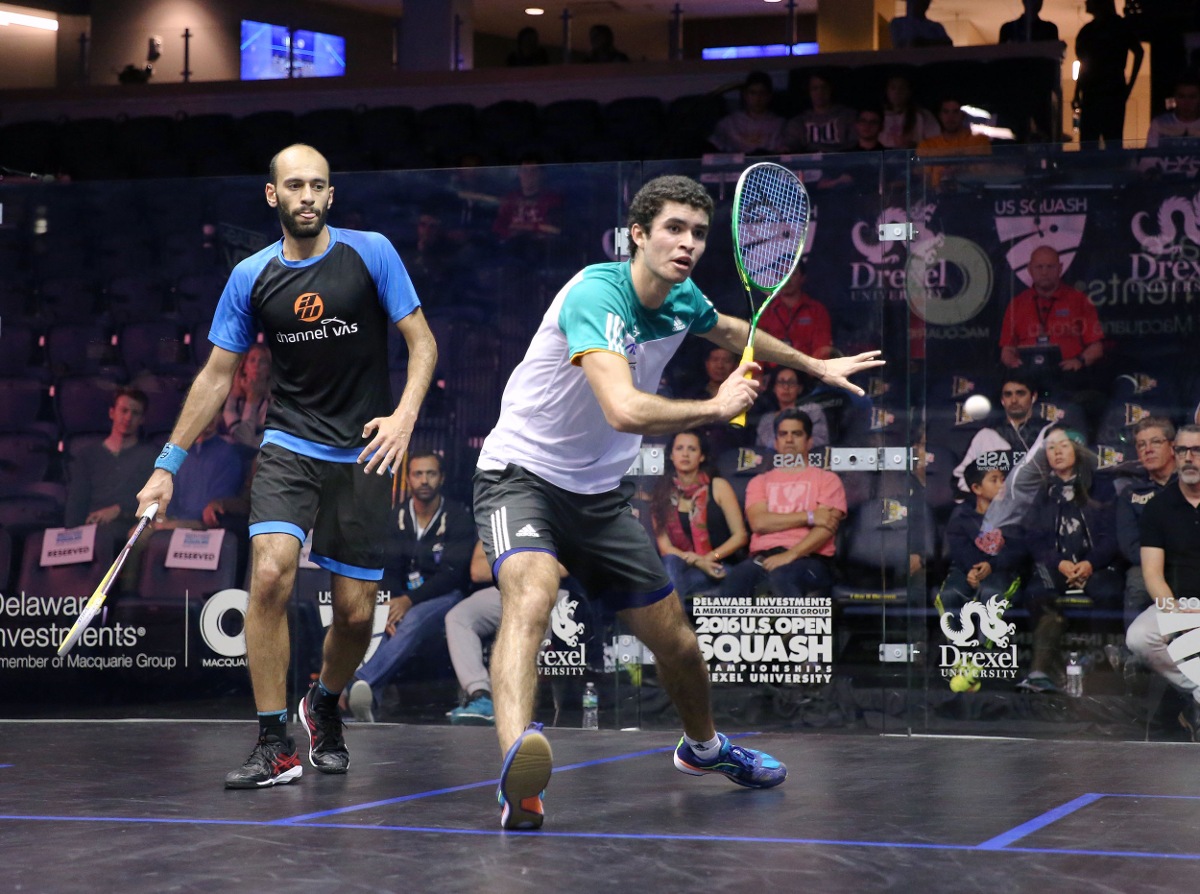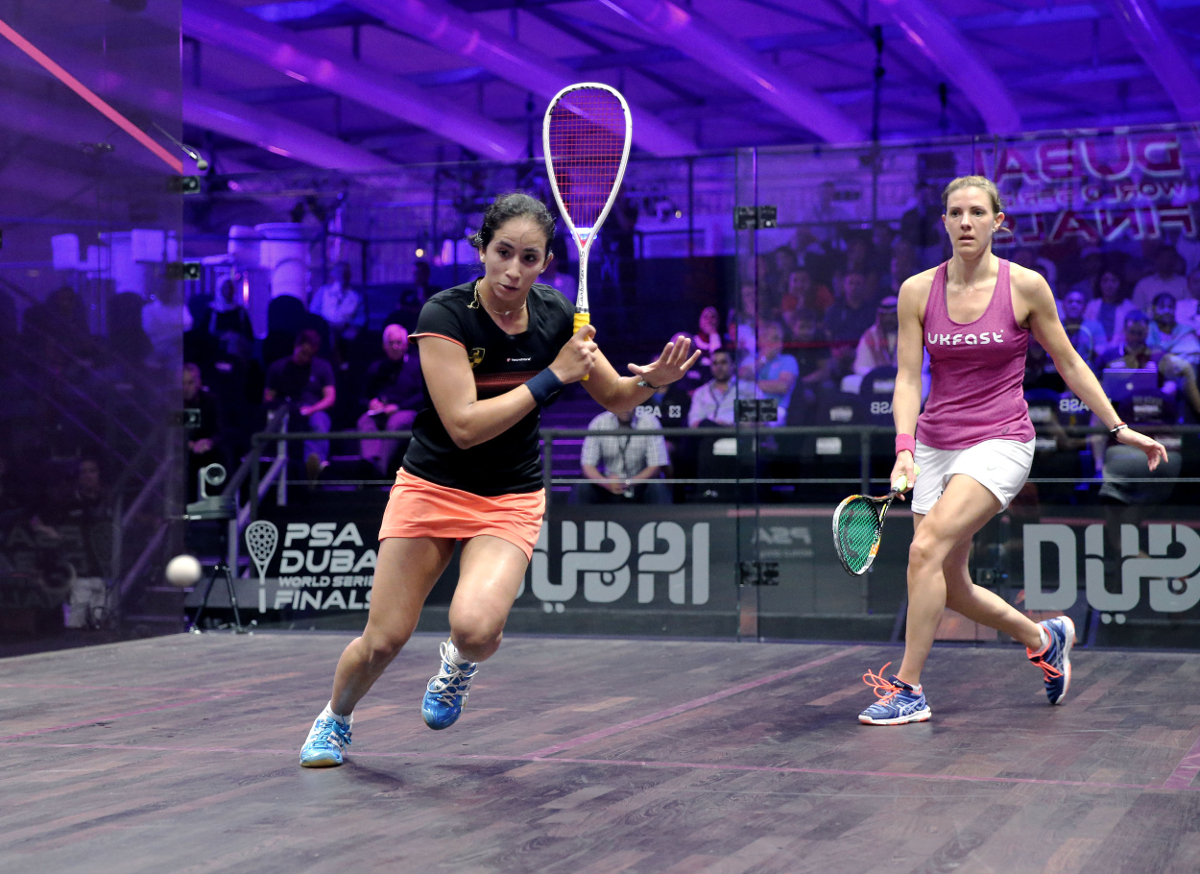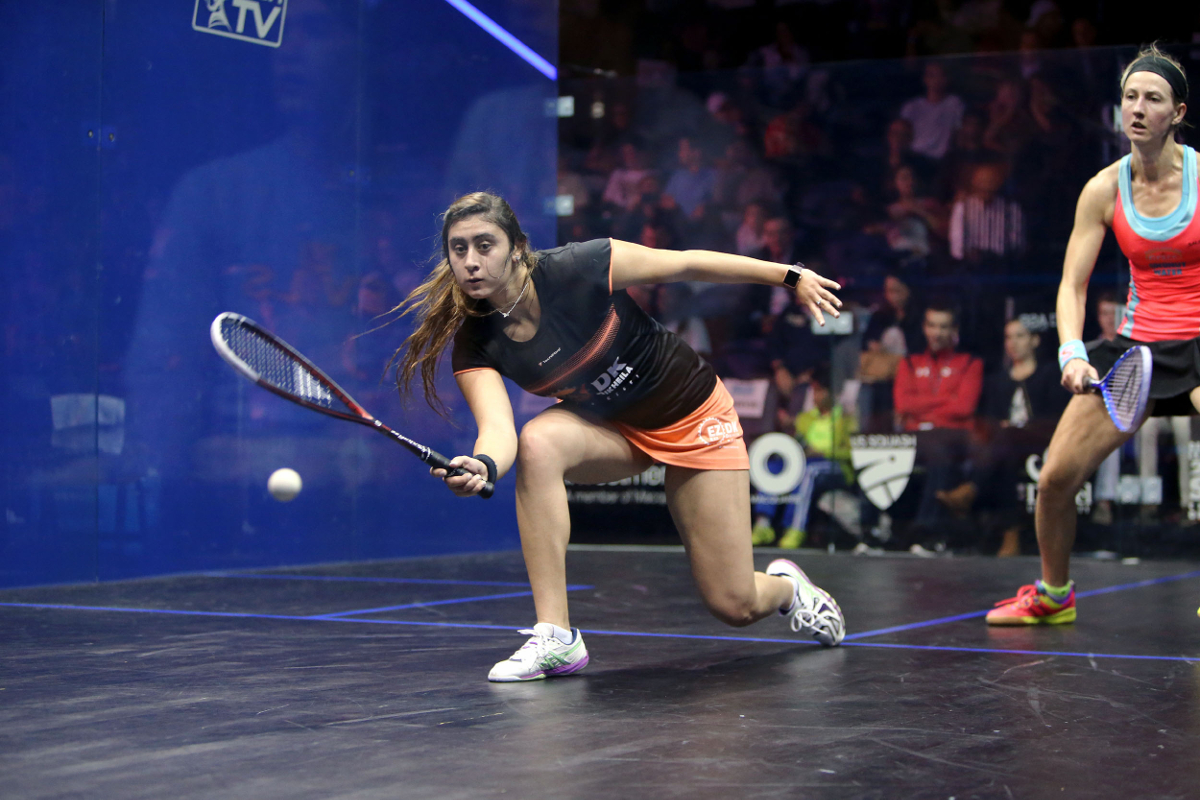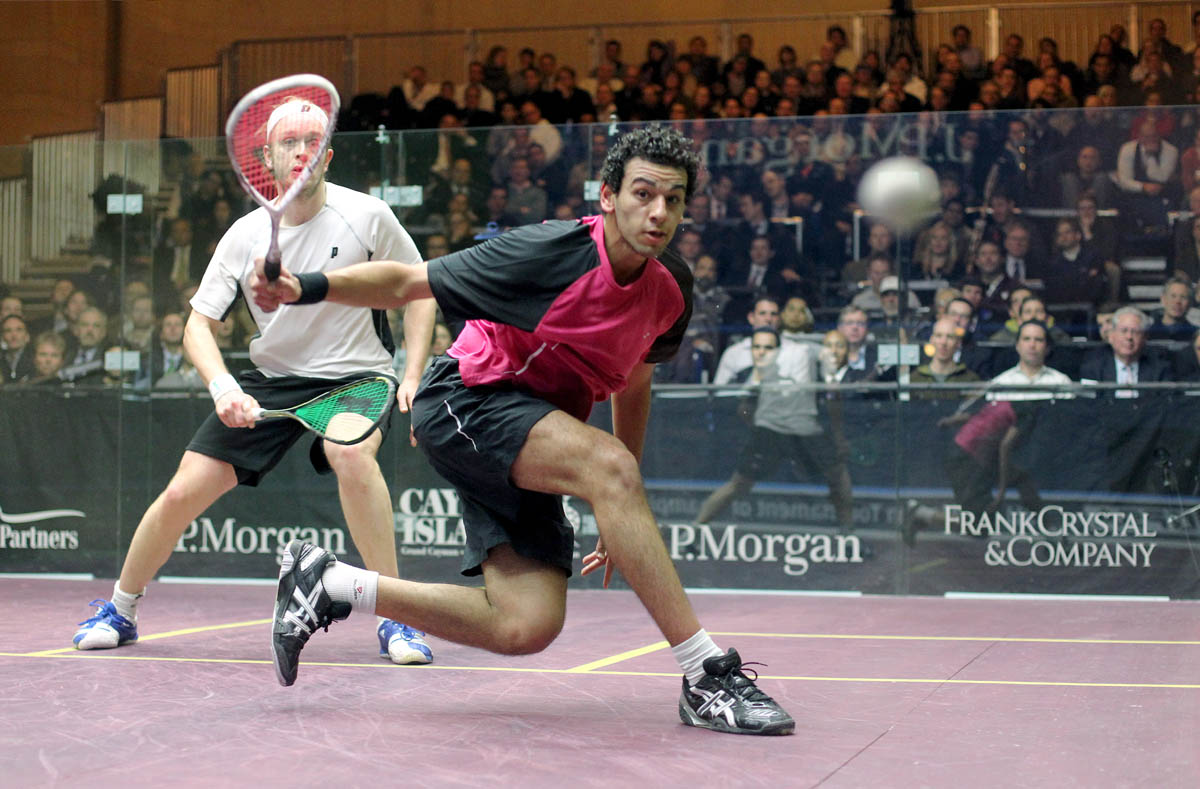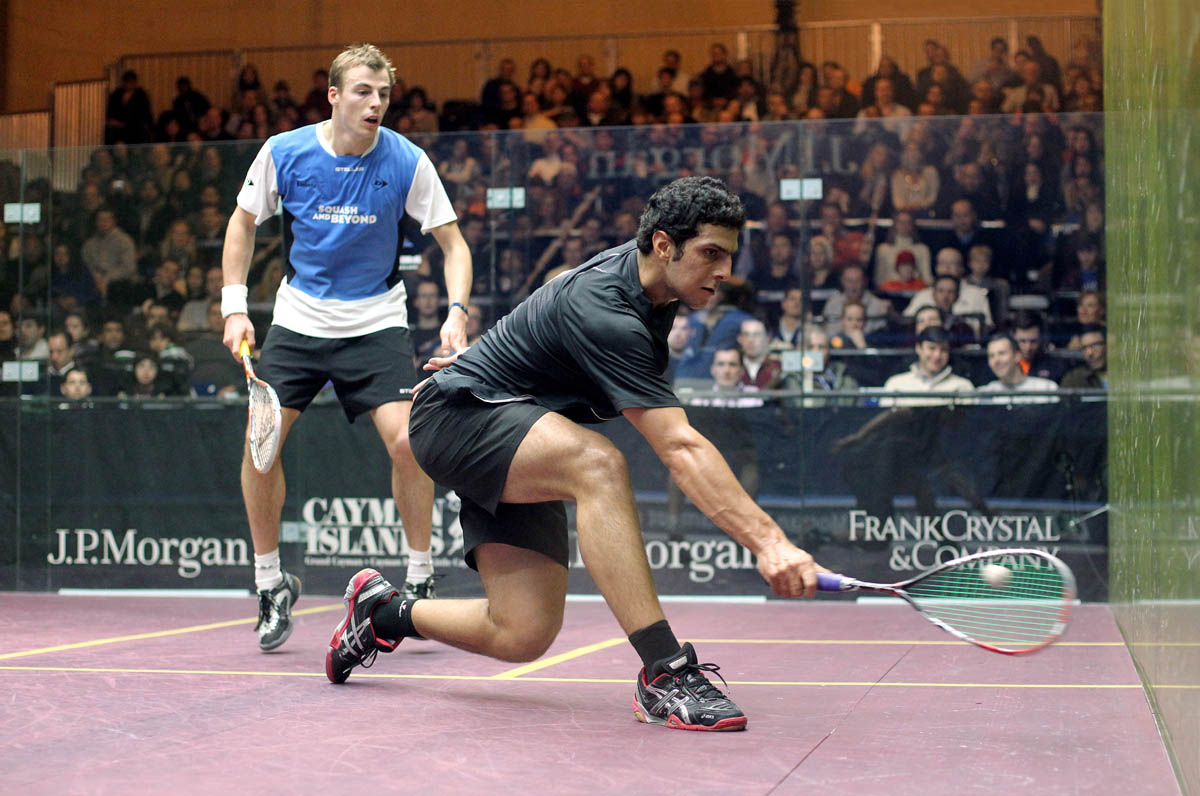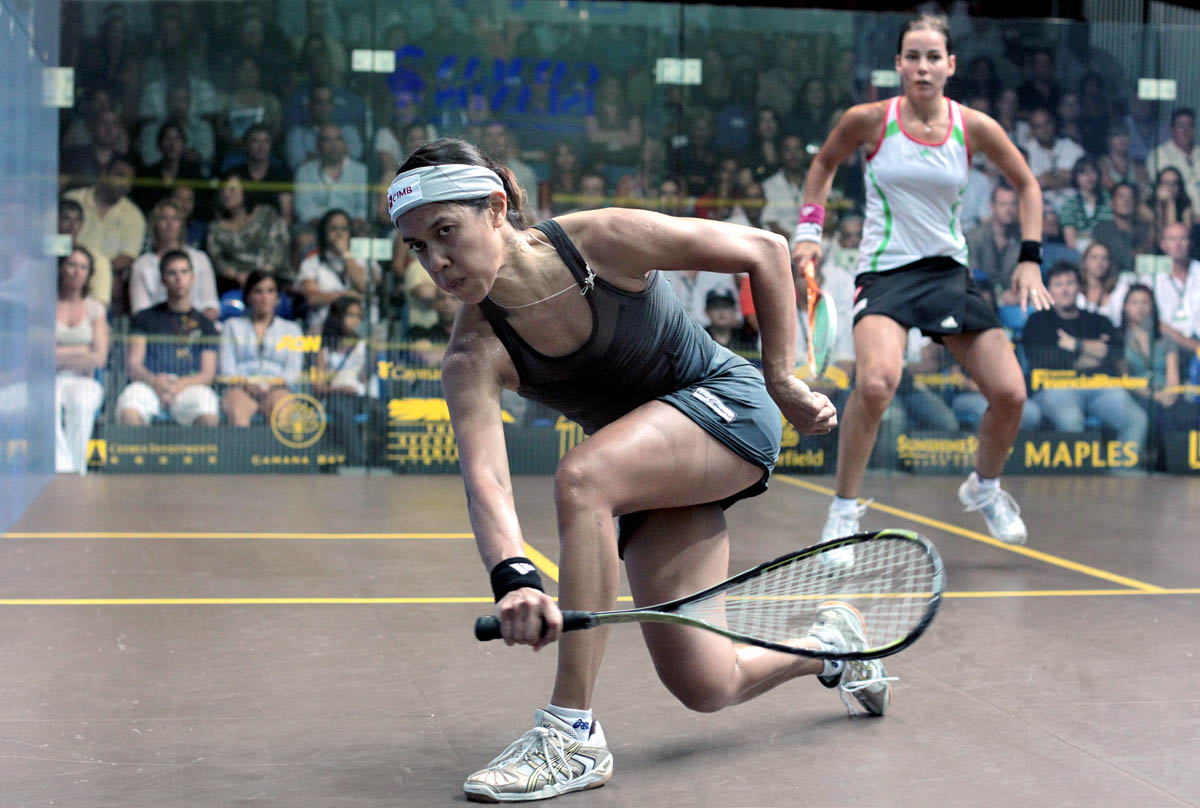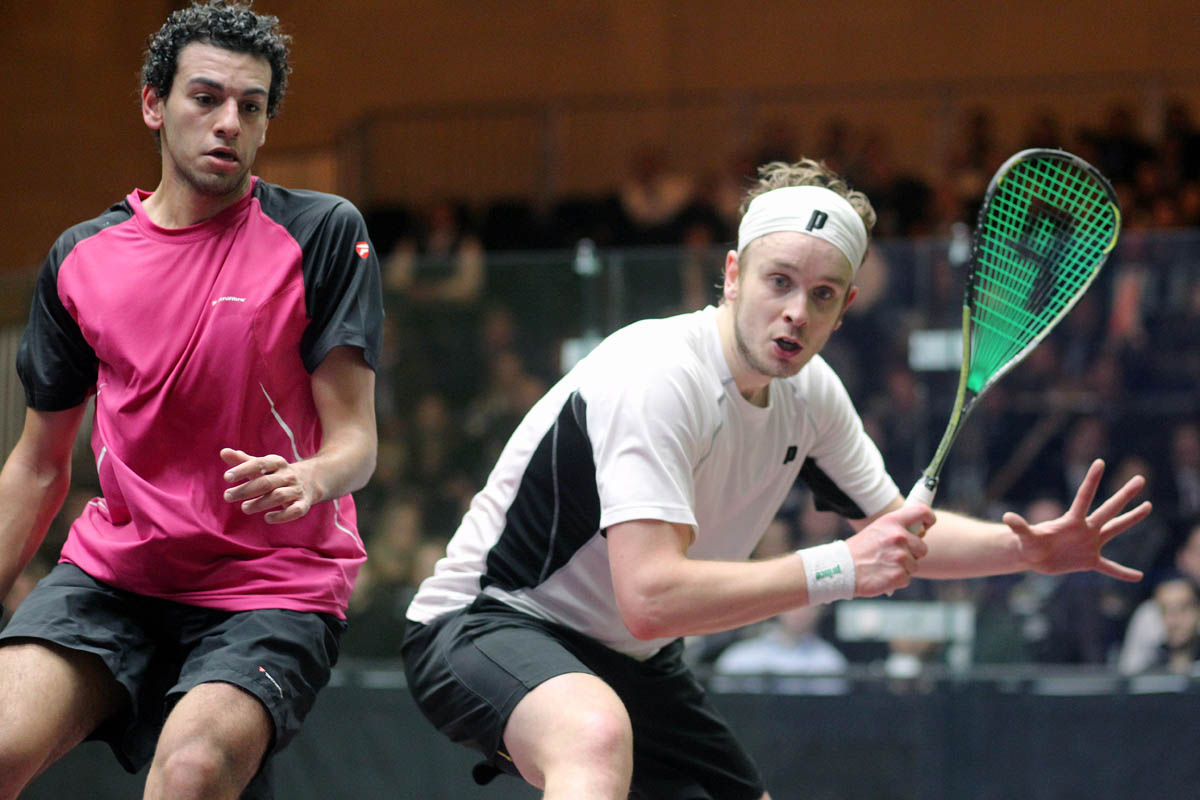The Neutral Grip
Introduction
There are many grips in squash some of them are listed below. These grips are used with different amounts of pressure (feel) from the fingers depending on the situation. When positioned in the T Area the player should use the Neutral Grip as this grip easily enables the other grips.
The Handle Thickness: The thickness of the actual handle of the racquet can have a bearing on the grip. If the player has a small hand then it is important not to have a handle that is too thick, otherwise, the neutral grip will feel too weak, which encourages the player to use the Natural Grip.
Grips
The Neutral Grip
Initially, the grip will feel weak and uncomfortable. However, it is essential that the player perseveres with this grip. Try not to grip the handle too tight but instead with enough pressure to hold the racquet. When making contact gently squeeze applying more pressure subject to the shot played.
The grip not only presents the racquet face in a neutral position, but allows the racquet face to extend further and assists in maintaining a cocked wrist. The Neutral Grip allows the racquet face to extend further.
The Ambidextrous Grip
Using The Forehand Open Plane Swing on both the backhand side and forehand side by initially gripping the racquet with both hands (like a tennis player) and after identifying what side the ball is going releasing one hand and hitting the ball with a forehand with the other hand.
The player grips the racquet handle with both hands each using the Neutral Grip.
It is recommended that when the player is returning serve on the orthodox backhand side the player should with the left hand grip the racquet handle lower and vice versa when returning serve on the orthodox forehand side.
A bio-mechanical perspective.
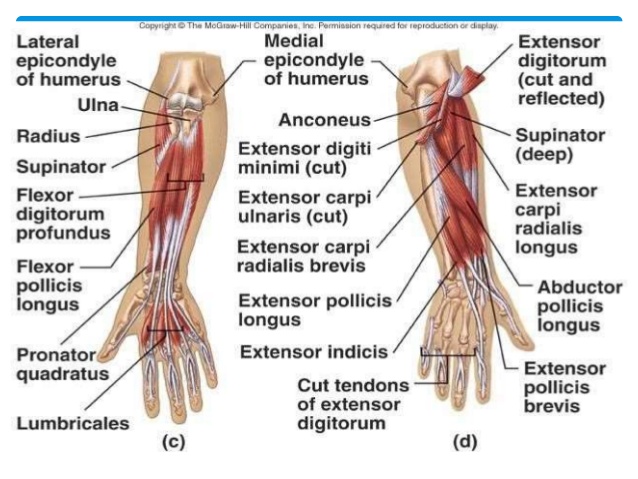
Muscles acting upon the wrist joint and in order of importance:
Radial abduction: extensor carpi radialis longus, abductor pollicis longus near thumb, extensor pollicis longus(muscle outside forearm), flexor carpi radialis(muscle inside forearm), flexor pollicis longus (muscle inside forearm).
Extension: extensor digitorum, extensor carpi radialis longus, extensor carpi radialis brevis, extensor indicis, extensor pollicis longus, extensor digiti minimi.
Thus, when using the Neutral Grip the relevant forearm muscles are naturally activated to encourage and maintain a cocked wrist, unlike the Natural Grip.
Bio-mechanical References:
Grimshaw, P, Lees, A, Fowler, N & Burden A, 2007, Sport & Exercise Biomechanics, Taylor & Francis Group, New York, USA.
Martini, FH 2006, Fundamentals of Anatomy & Physiology, 7th edn, Pearson Education, California, USA
From Wikipedia, the free encyclopaedia.
Copyright South Australia Squash Academy Michael Nash All Rights Reserved


